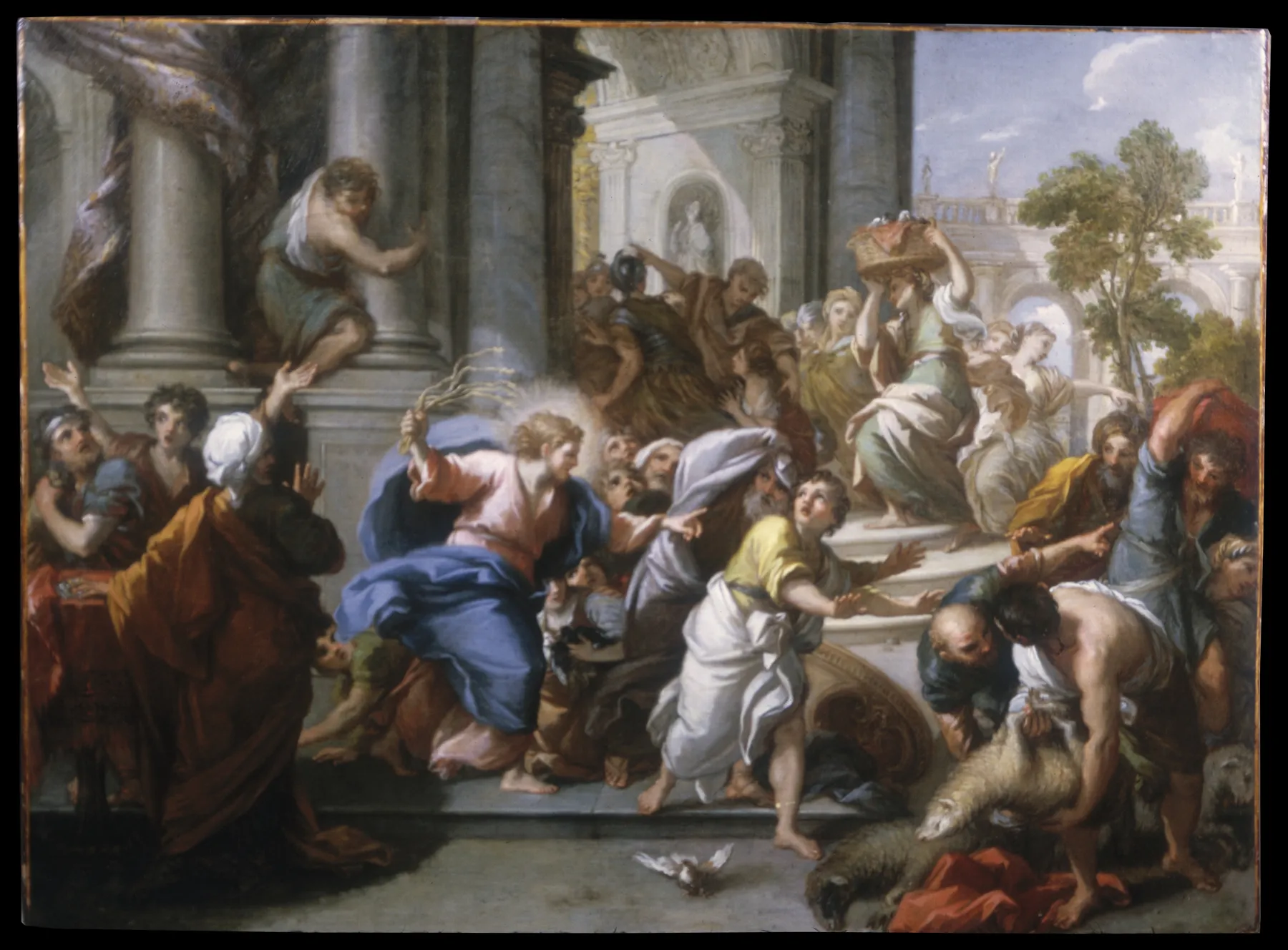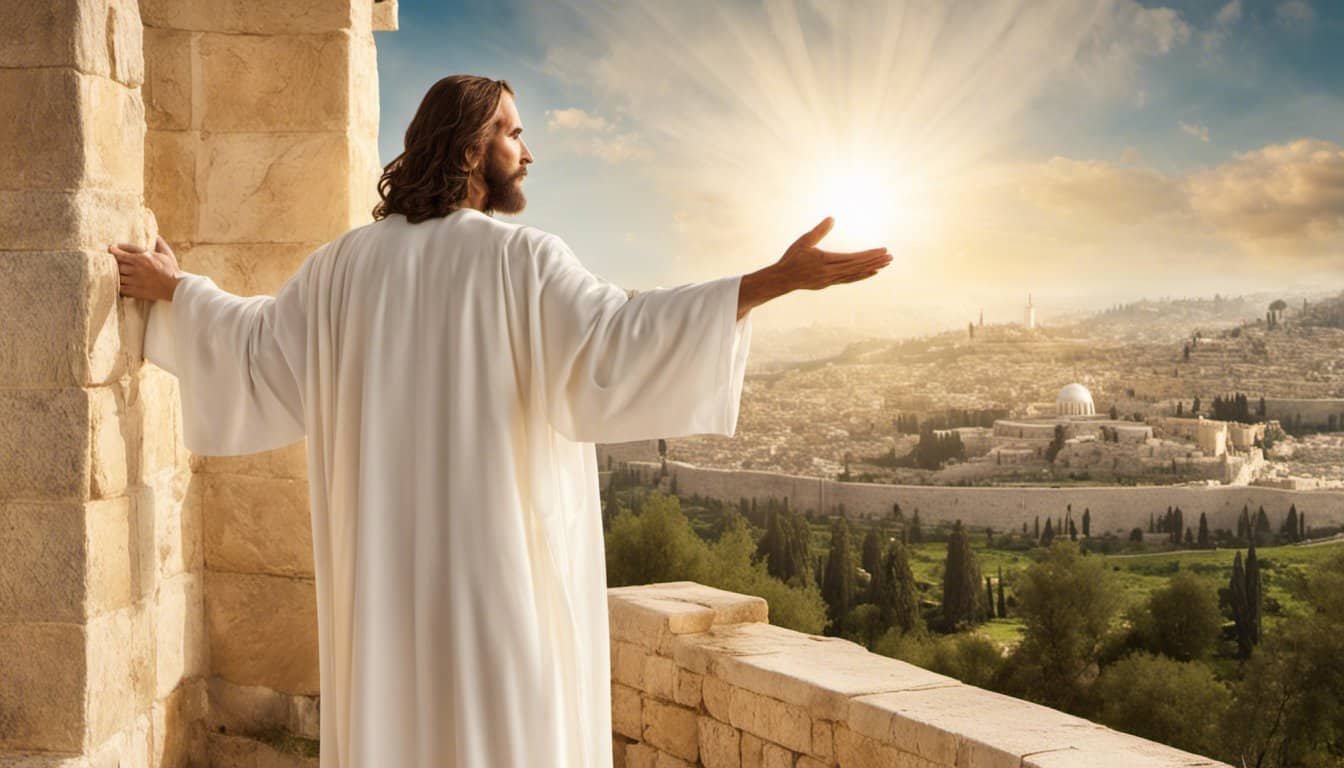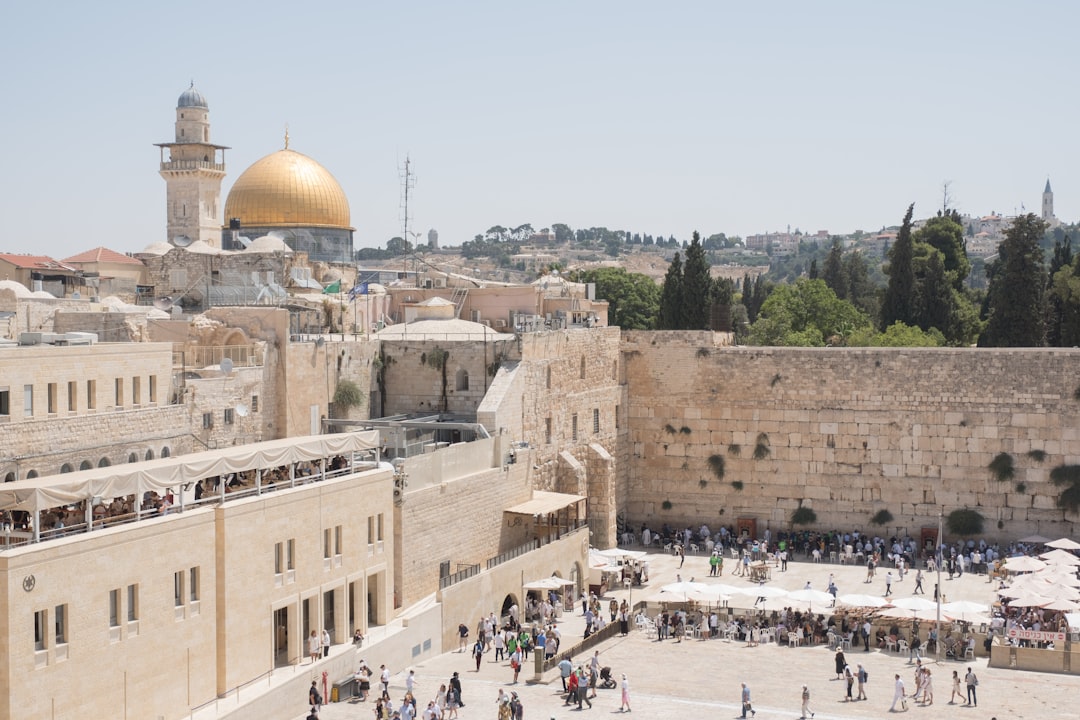The temple in Jerusalem was the epicenter of ancient Israel’s spiritual and cultural life. Among the various courtyards surrounding the temple, the court of the gentiles has held a very significant place. From religious ceremonies and worship practices to its cultural significance, the court of the gentiles was an important space. In this article, we will explore the history, religious practices, architecture, and cultural significance of the Court of the Gentiles. Read on to discover more about this significant aspect of Jewish culture.
The History and Significance of the Jewish Temple

The Jewish Temple was one of the most significant landmarks of Jewish culture. The temple was a sacred space where the Jewish people gathered to participate in various religious practices, rituals, and ceremonies. The Jewish Temple (Herod’s Temple) was located in Jerusalem, and it was built during the ancient times of Jewish history.
When it came to Jewish traditions, the temple was the central hub of their cultural practices. The court of the Gentiles was a vital part of the Jewish Temple and was situated in the outer court of the temple. It was a space that was designed to accommodate gentile believers who were not Jews, to come and worship together with the Jewish people.

The court was the largest part of the temple, and it was designed to accommodate the diverse cultures that came to worship in the temple. This act of religious tolerance was remarkable for its time and shows that the Jewish people were welcoming and inclusive of all people. It was a space where people could come to pray, meditate, and participate in different cultural and religious practices.
The significance of the court of the gentiles in Jewish culture was immense. It was a space where people from different backgrounds could come together in peace and unity. It was a declaration of the value of diversity and the richness of cultural exchange. The layout and architecture of the temple’s court of the gentiles were a testament to the Jewish people’s ingenuity and resourcefulness.
In the New Testament, the Gospels write of an incident where Jesus cleansed the court of the gentiles. This was because some people had turned the court into a marketplace, which was a significant violation of the sanctity of the space. In His actions, Jesus made it clear that the court of the gentiles was a sacred space for worship and should be treated as such.
Today, there are ongoing archaeological discoveries that reveal more information about the temple’s history and its court of the gentiles. Researchers have discovered new artifacts and evidence that shed light on the different religious practices that people participated in the court. These discoveries are significant because they add to our knowledge of ancient Jewish culture and showcase the legacy of the Jewish people.
In summary, the court of the gentiles was an essential part of the Jewish Temple. It was a space where people from different backgrounds could come together in peace and unity. Its significance was not just to Jewish culture, but to the broader community of the time. Today, it is a reminder of the historic preservation of ancient Jewish traditions, religious tolerance, and the power of cultural diversity.
List: The Significance of the Court of the Gentiles in Jewish Culture
- A space for religious tolerance
- A declaration of the value of diversity
- A testament to the Jewish people’s ingenuity and resourcefulness
- A reminder of the historic preservation of ancient Jewish traditions
- A reminder of the power of cultural exchange
Introduction to the Court of the Gentiles
When we think about the Jewish Temple, it’s easy to get lost in the historical significance, religious ceremonies, and intricate details of the ancient site. However, one of the most important areas of the Temple was the Court of the Gentiles.
As its name suggests, the Court of the Gentiles was a sacred space within the Temple designated for non-Jewish visitors and gentile believers. Located in the outer court of the Temple, this section was the largest area of the sacred space and held a significant role in Jewish culture.
The Court of the Gentiles was a double-level portico, accessed by ten entrances, and was surrounded by a low wall with warning inscriptions (in Greek and Latin) attached about the dangers of trespassing past the wall into the main temple. Inside the court was a separate area where Jews could conduct business without coming into contact with non-Jewish visitors. The inner sanctum of the temple was reserved only for Jewish men, and even they could not enter anytime they wanted.

The Court of the Gentiles was not only a place for cultural and religious tolerance, but it was also a bustling marketplace where vendors sold animals for sacrifice and exchanged temple currency. It was not uncommon to see people praying or preaching in the Court of the Gentiles, and this mix of cultural diversity and spiritual meaning undoubtedly played a key role in the temple hierarchy.
What’s fascinating about the Court of the Gentiles is that in the New Testament, Jesus was known to perform cleansing rituals and teach there, showing just how significant this area was in ancient Jewish traditions. His actions were seen as controversial and stirred up some of the Jewish leaders at the time.
Throughout history, the Court of the Gentiles has been a vital location of religious symbolism that reflects the Temple’s historic preservation. In recent years, archaeologists have uncovered new discoveries related to the Court of the Gentiles that shed light on how it was used and the significant role it played in Jewish culture.
As we reflect on the Court of the Gentiles, we are reminded of the importance of religious tolerance and the power of diversity in sacred spaces. The Court of the Gentiles remains a significant location in Jewish history, and it continues to inspire us to respect and understand different cultures and beliefs.
Architecture and Layout of the Court of the Gentiles
When it comes to religious architecture, few structures are as impressive and awe-inspiring as the Jewish Temple. One of the most fascinating areas of the Temple was the Court of the Gentiles, a massive outer courtyard that was the first point of entry for non-Jewish visitors into the sacred space.
The Court of the Gentiles was an enormous area, covering around 35 acres of land surrounding the Temple itself. It was surrounded by walls that were up to 60 feet high in some places, and it was separated from the inner court by a series of low walls and steps. The entrance to the Court of the Gentiles was through a series of large gates that were topped with ornate decorations and symbols.
« Unraveling the Mystery: What Does the Bible Teach About Transferring Spirits?
All Things to All People: The Power of Universal Appeal »
The layout of the Court of the Gentiles was designed to accommodate the large crowds of visitors who would come to the Temple complex for prayer, sacrifice, and other religious ceremonies. There were wide avenues and broad areas for people to gather and move around, and the entire space was paved with marble and other decorative materials.
One interesting feature of the Court of the Gentiles was the marketplace that was located within its walls. This marketplace was a hub of activity, with vendors selling a wide variety of goods ranging from sacrificial animals to jewelry and food. It was not uncommon to hear the cries of merchants trying to attract customers as people moved through the marketplace towards the Temple.
Another important architectural feature of the Court of the Gentiles was the mikveh, or ritual bath, that was located near the entrance to the inner court. This bath was used by visitors to cleanse themselves before entering the Temple itself, and it was a critical part of the Jewish ritual practice.
Throughout history, the Court of the Gentiles has played an essential role in promoting religious tolerance and cultural diversity. Despite being a primarily Jewish space, non-Jewish visitors were allowed to enter and participate in many of the activities that took place within its walls. This inclusivity was a hallmark of ancient Jewish traditions and helped to establish the Temple as a sacred space for believers of all backgrounds.

As you think about the layout and architecture of the Court of the Gentiles, it’s easy to see the spiritual meaning behind these physical structures. The space was designed to facilitate worship and create a sense of community among visitors, and it continues to be a powerful symbol of Jewish culture and faith to this day.
To summarize, here are some key points about the architecture and layout of the Court of the Gentiles:
- The Court of the Gentiles was a massive outer courtyard located around the Jewish Temple.
- Its walls were up to 60 feet high and separated it from the inner court of the Temple.
- The Court of the Gentiles had a marketplace, mikveh, and wide avenues for visitors to move around.
- The space promoted cultural diversity and religious tolerance.
- Its layout and architecture were designed to facilitate worship and community among believers.
Religious Ceremonies and Worship in the Court of the Gentiles
In the Jewish Temple, the Court of the Gentiles played an important role in religious ceremonies and worship. Despite its name, this area was not restricted to Gentiles alone, but rather served as a space for all who were not of the Jewish priestly class.
The outer court of the Temple, where the Court of the Gentiles was situated, was the largest and busiest part of the Temple complex. This made it an ideal space for a variety of activities. People from all walks of life would gather here for prayer, preaching, and fellowship. The Court of the Gentiles was also home to a bustling marketplace where merchants sold animals for sacrifice and other goods.
For Gentile believers, the Court of the Gentiles represented a significant opportunity to participate in the Temple’s spiritual activities. However, the Court of the Gentiles became known for its rowdy marketplace and was susceptible to becoming crowded and chaotic.

Many Jews saw the Court of the Gentiles as a symbol of their temple’s openness to other cultures and of the importance of inclusivity and religious tolerance. They believed that it was essential to provide a place for those who were not of the Jewish priestly caste to worship, pray, and learn about their religion.
The Court of the Gentiles is an essential area in the Jewish Temple, having a deep spiritual meaning and cultural significance. It was a space where people could strengthen their faith, learn about other cultures and beliefs, and embrace diversity.
Although the New Testament accounts suggest that Jesus was critical of the exploitation of the marketplace in the Court of the Gentiles, he did recognize the significance of the area as a place for people of all nations to worship. Jesus also demonstrated a spirit of respect and love for all people and their cultures.
Today, archaeological discoveries continue to offer new insights into the Court of the Gentiles’ architecture and layout, and ancient Jewish traditions. There is also a rising interest in the historic preservation and cultural significance of the Temple, and particularly the Court of the Gentiles, which has been restored for modern-day tourists to visit and engage with.
Overall, the Court of the Gentiles served as a unique space within the Temple’s hierarchy, representing religious symbolism, cultural diversity, spiritual meaning, and inclusivity. It was a place where people from all walks of life gathered to worship, learn, and connect with each other, making it an essential part of the Jewish Temple.

The Significance of the Court of the Gentiles in Jewish Culture
The Court of the Gentiles was an outer court in the temple of Jerusalem that allowed gentile believers to come close to the House of God and worship Him. This space was considered sacred and served several purposes in Jewish culture. Below are five reasons why the Court of the Gentiles was significant:
-
Religious Tolerance: The Court of the Gentiles was created to show religious tolerance to non-Jewish believers. It became a meeting place for people from different cultural backgrounds where they could worship the God of Israel together.
-
Marketplace: The Court of the Gentiles was also used as a marketplace where Jewish elders sold animals for sacrifice and where money changers were stationed. This was necessary because Jewish coins had specific symbols that could not be used for offerings.
-
Prayer: The Court of the Gentiles was also a place for prayer. People from all backgrounds could come and pray to the God of Israel. It was a place of inclusion and acceptance.
-
Preaching: The Court of the Gentiles was a space where rabbis would preach the word of God to the crowds. Jesus himself preached in the Court of the Gentiles, as it was a place where people could be reached with the gospel.
-
Cultural Diversity: The Court of the Gentiles became a symbol of cultural diversity within the Jewish temple. It was a space where gentile believers could experience the rich heritage and traditions of Jewish culture while maintaining their own identity.
As we can see, the Court of the Gentiles in the Jewish temple was a place of great spiritual meaning and cultural significance. It allowed for the inclusion of all believers, regardless of their background, and served as a place of worship and learning. As Christians, we can learn from the way the temple of Jerusalem was designed to be inclusive and accepting, and we can strive to embody those same values in our churches and communities today.
Role of Jesus in the Court of the Gentiles
In the New Testament, the Court of the Gentiles is mentioned in several occasions as the location where Jesus performed significant actions related to his ministry. In particular, the gospels portray Jesus as cleansing the temple in Jerusalem from the merchants and money-changers who turned the outer court into a marketplace.
These events are not only important for understanding the relationship between Jesus and Jewish authorities, but also for reflecting on the spiritual meaning of the temple courts. By driving out the sellers and proclaiming that “my house shall be called a house of prayer for all the nations” (Mark 11:17), Jesus affirmed the principles of religious tolerance and openness to gentile believers that the Court of the Gentiles represented.

Furthermore, Jesus used the temple courts as a space for teaching and preaching. According to the gospel of John, Jesus taught in the porticoes of Solomon, which were part of the outer court (John 10:23). This suggests that Jesus saw the Court of the Gentiles not only as a practical gathering place for his followers, but also as a symbol of the message he was preaching about the inclusiveness and universality of God’s love.
The role of Jesus in the Court of the Gentiles highlights the cultural diversity that existed in Jerusalem and in the ancient Jewish traditions. Jesus’ actions showed that the sacred space of the temple was meant to be a unifying force among people of different backgrounds, and that the rituals and practices performed there were meant to connect worshippers to God, rather than to exclude certain groups.
Today, the court of the gentiles remains an important symbol of historic preservation and religious symbolism. Archaeological discoveries continue to unveil new aspects of its architecture and layout, shedding light on the daily life of people in ancient Jerusalem. As we reflect on the significance of the Court of the Gentiles in Jewish culture, we can also remember the role that Jesus played in shaping its spiritual meaning and inviting us to participate in a message of love, compassion, and cultural diversity.
Rediscovering the Court of the Gentiles: Current Archaeological Discoveries
As the popularity of religious tourism continues to soar, so does the desire to discover and learn more about the historic roots of our faith. The recently discovered archaeological discoveries pertaining to the Court of the Gentiles in the Jewish Temple have opened up a whole new world of knowledge and insight into this ancient sacred space. Here are some of the most intriguing discoveries:
- The Court was a Cleansing Station
It turns out that the Court of the Gentiles was not just a bustling marketplace. Archeologists have uncovered purification baths that were used for cleansing before entering the inner courts of the Temple. This helps us understand the symbolic importance of cleansing in ancient Jewish traditions, and how sacred spaces like the Temple were used for spiritual renewal and transformation.
- Objects of Worship Found

Recent findings at the Court of the Gentiles have also exposed evidence of ritual practices and worship, including pieces of decorative architecture and altar stones. These objects offer insight into the religious practices of the time and help us better understand how non-Jewish believers were able to participate in Temple worship.
- Symbolic Significance of the Court of the Gentiles
The Court of the Gentiles was not just any ordinary courtyard – it played a crucial role in how the Jewish people interacted with their Gentile counterparts. The Temple hierarchy recognized the cultural diversity of their city, and the Court of the Gentiles was a symbol of religious tolerance and inclusion. This theme of cultural diversity is repeated throughout the New Testament, as Jesus himself chose to preach and teach in the Court of the Gentiles.
- The Importance of Historic Preservation
These discoveries underscore the importance of historic preservation, especially when it comes to the preservation of sacred spaces. By uncovering the ancient symbolism and religious practices related to the Court of the Gentiles, we can gain a deeper understanding of the spiritual meaning behind Jewish culture and rituals.
- The Continuing Relevance of the Court of the Gentiles
Ultimately, the rediscovery of the Court of the Gentiles is a reminder of the significance of religious tolerance, inclusion, and diversity. It also highlights the importance of historic preservation and the ongoing study of ancient cultures and traditions. As Christians, we can learn from the historic practices and symbolism of the Jewish Temple and apply these lessons to our own worship and spiritual practices.
As we continue to learn more about the Court of the Gentiles, may we be inspired to approach our faith with a renewed sense of curiosity, reverence, and cultural sensitivity.












